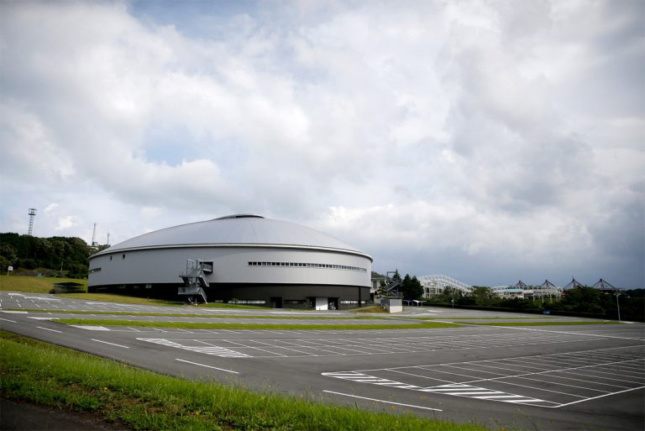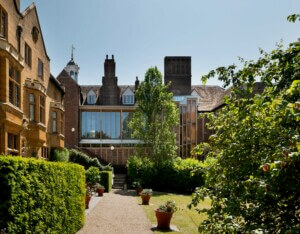Eight out of the 42 venues slated to host next summer’s Olympic and Paralympic Games in Tokyo will be brand new. All were designed by Japanese architects, and it’s one of the rare times that the biennial sporting event isn’t banking on the brand recognition of a foreign-born design team for one of its main buildings. In fact, most of the architecture is old; 25 venues are already existing thanks to Japan’s plans to repurpose a number of the buildings constructed for the 1964 Summer Olympics, the last time Tokyo hosted the Games.
Though Kengo Kuma’s timber-clad Olympic Stadium will be at the center of the sprawling citywide sporting campus, the other slew of structures—most of them inspired by Japanese tradition—will also put Tokyo’s architecture on the world’s stage. Take a look at some of the buildings that are coming up for 2020, as well as the ones that will return to the spotlight:
Olympic Stadium
Architect: Kengo Kuma
Capacity: 68,000
Sport: Opening/Closing Ceremonies, soccer, track and field
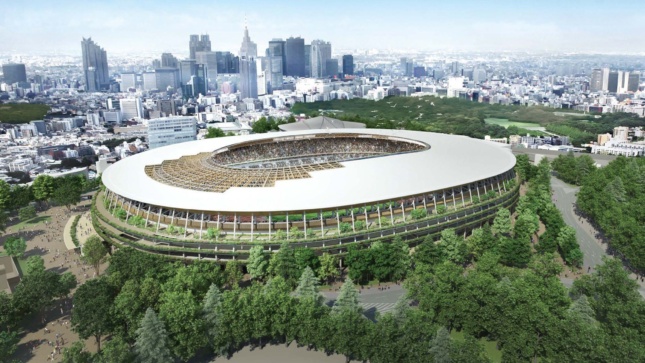
After almost of decade of controversy over the design of the Olympic Stadium, Kengo Kuma’s vision is nearly complete. An all wood-and-steel structure, it broke ground in December 2016 on the site of the former National Stadium which was demolished the year prior. Kuma’s design was criticized upon release, many citing its similarity to Zaha Hadid’s defunct proposal for the project, which she won in 2012. Hadid’s proposal proved too costly, so the Japanese government decided to rebid the site in late 2015, asking designers to partner with local contractors who could estimate costs and timing. Kuma won in a partnership with several major groups including the Taisei Corporation and Toyo Ito.
Olympic Aquatics Center
Architect: Yamashita Sekkei and Cox Architecture
Capacity: 15,000
Sport: Swimming, diving, synchronized swimming
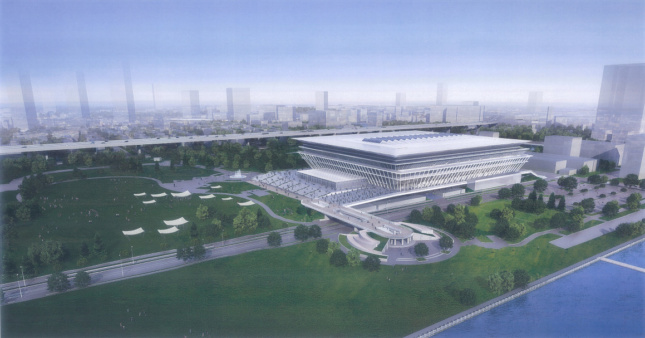
Scheduled for completion in February, the Aquatics Center features a distinct and thin roof supported by four bare pillars that rise from the ground level. Its four angular all-glass facades appear to have a rib-like pattern going from end to end, drawing the eye upward to focus on the trapezoidal-shaped platform atop it. The entire 828,800-square-foot arena, located in the North Tokyo Bay, is raised on a podium and is expected to weigh 7,000 tons.
Ariake Arena
Architect: Kume Sekkei
Capacity: 12,000
Sport: Indoor Volleyball
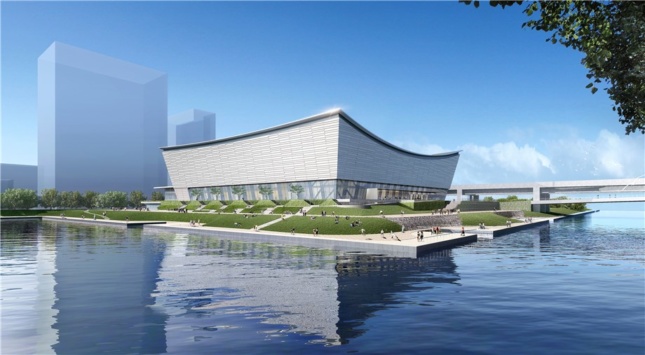
Volleyball made its Olympic debut in 1964, coincidentally the last time Tokyo hosted the Summer Games, and the future Ariake Arena was a major part of the city’s 2020 bid. Situated in a northwest corner of Tokyo Bay next to the Ariake Tennis Park, the almost-complete project features a convex roof design that’s unlike any other venue in the athletic event. Resembling an inverted crest wave, the silver-structure boasts incredible views of the bay outside its front door.
Olympic Village
Architect: Unknown
Capacity: 17,000 athletes
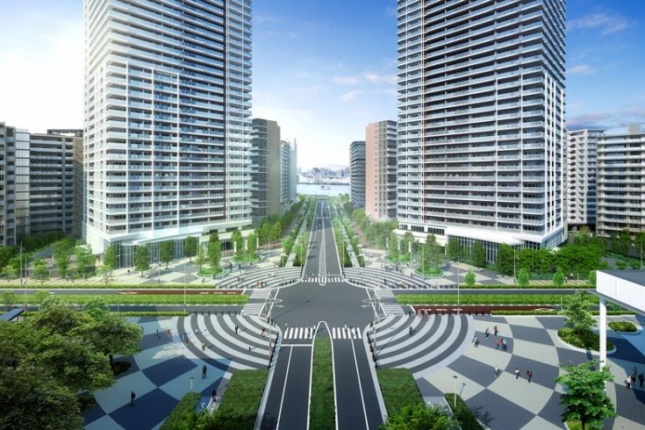
Tokyo’s Olympic Village will be located on the Harumi Pier, which is at the physical center of the Heritage and Tokyo Bay venue zones—the two areas where the venues have been allocated for Tokyo 2020. Spread out over 33 acres, the village will contain 22 buildings ranging from 14 to 22 stories, as well as two 50-story residential towers. It’s another controversial project: locals are concerned about the site’s functionality after the Olympics are over. Plans call for some 5,650 apartments to be built in the next five years, which has the real estate market worried. Branded as the Harumi Flag community, the development will include commercial space, parks, and a school on the pier as well. More interestingly, it’s supposed to be the largest hydrogen-powered development in the world.
Ariake Gymnastics Center
Architect: Nikken Sekkei
Capacity: 12,000
Sport: Gymnastics
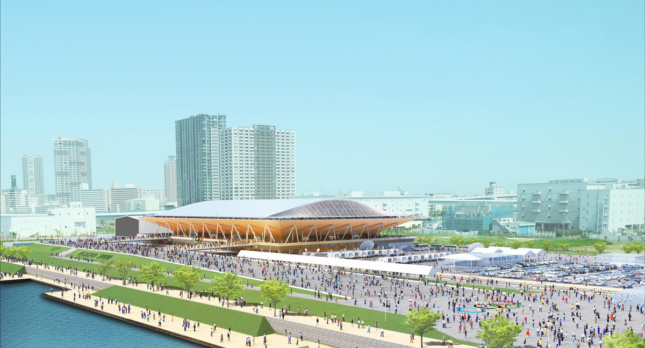
Located in Tokyo’s Koto Ward just steps away from the Olympic Village, the Ariake Gymnastics Center will feature more wood than any other venue in its bowl-shaped design. Construction is set to finish in October on the one-million-square-foot, low-lying structure which, according to the Japan Times, includes slanted walls as a nod to the engawa verandas found on traditional Japanese homes. The central element of the architecture is a massive, 394-foot-long-by-295-foot-wide wood roof that arches over the building’s core. The exterior includes a series of crisscrossed wooden poles that stretch from the overhang of the roof to the plaza below.
Here’s a rundown of the older venues that will host an event for Tokyo 2020:
Yoyogi National Stadium
Architect: Kenzo Tange
Capacity: 13,000
Sport: handball
Built: 1964
Known for: Its parabolic roof design and for inspiring Frei Otto’s design for the Olympic Stadium in Munich.
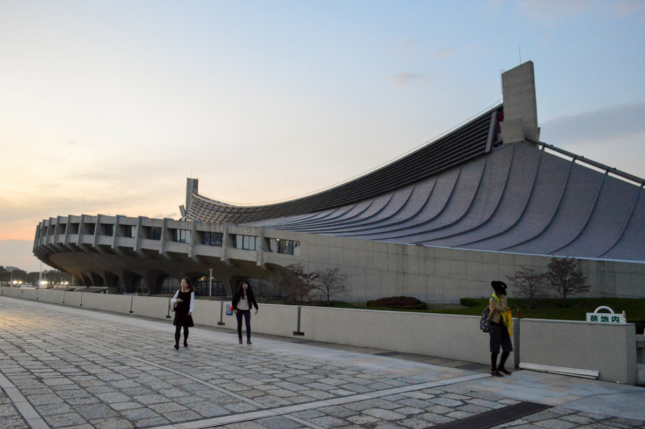
Nippon Budokan
Architect: Mamoru Tamada
Capacity: 41,000
Sport: Judo
Built: 1964
Known for: Its octagonal shape and pointed roof that references Mt. Fuji., as well as a concrete lower half that looks like a Brutalist version of a traditional Japanese temple.
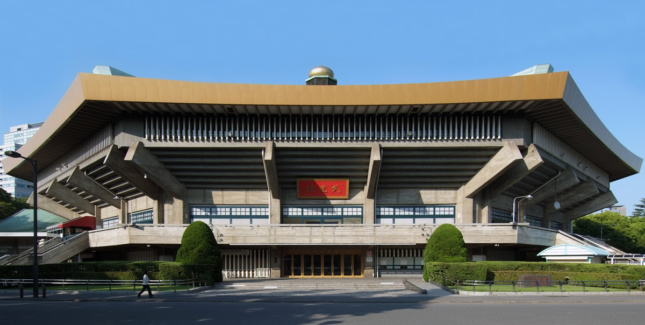
Sapporo Dome
Architect: Hiroshi Hara
Capacity: 41,000
Sport: Soccer
Built: 2001, for the 2002 FIFA World Cup
Known for: Its metallic exterior and futuristic form, as well as for boasting the first retractable pitch in the world.
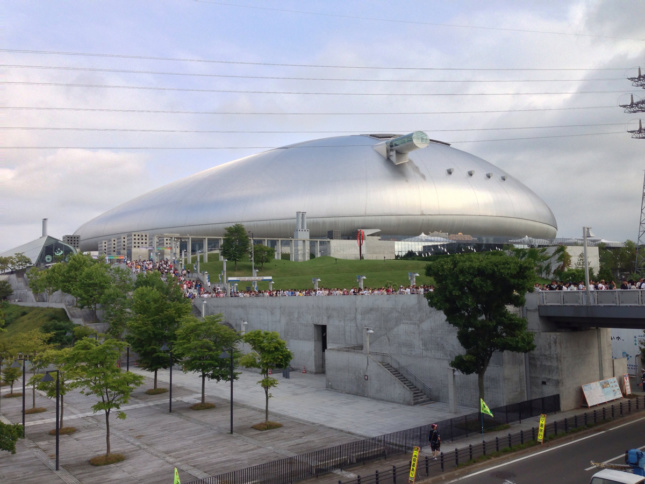
Tatsumi International Swimming Centre
Architect: Environment Design Institute
Capacity: 3,600
Sport: Water polo
Built: 1993
Known for: Its space frame roof and all-white exterior cladding, that folds over the glass and concrete building to create curved frames for views.
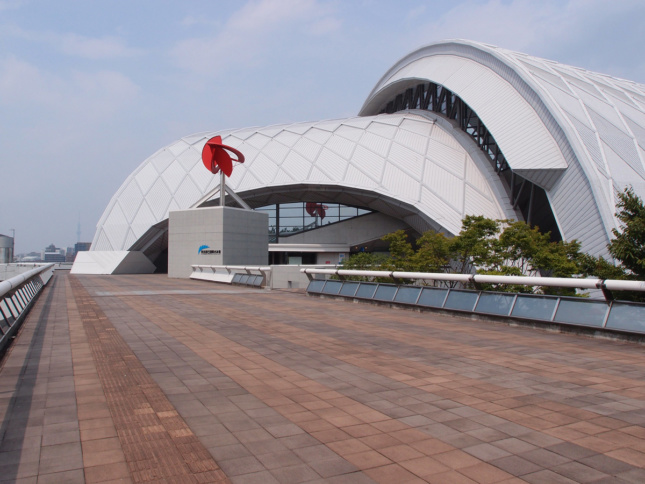
Tokyo Big Sight
Architect: AXS Satow
Size: 1.1 million square feet
Sport: Planned to host wrestling, fencing, and taekwondo, but will now be the main media center
Built: 1996
Known for: Its four inverted pyramids clad in titanium that together house a convention center.
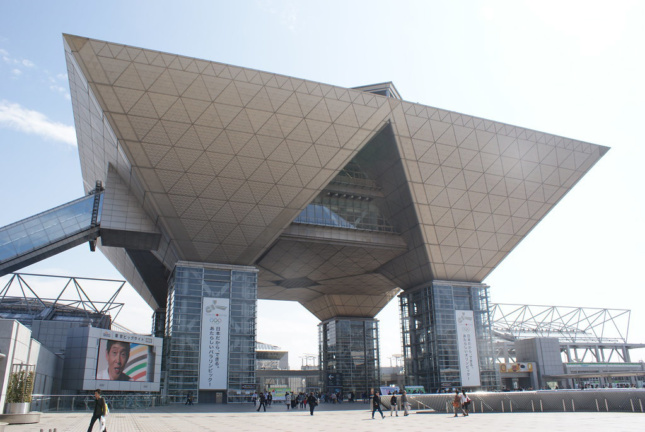
Izu Velodrome
Architect: Gensler and Schurmann Architects
Capacity: 1,800; 4,300 with temporary seating
Sport: Track Cycling
Built: 2011
Known for: The silver drum-shaped building holds the first 250-meter-long indoor track made of timber in Japan.
